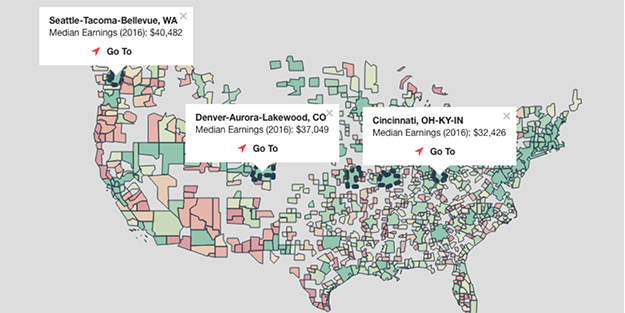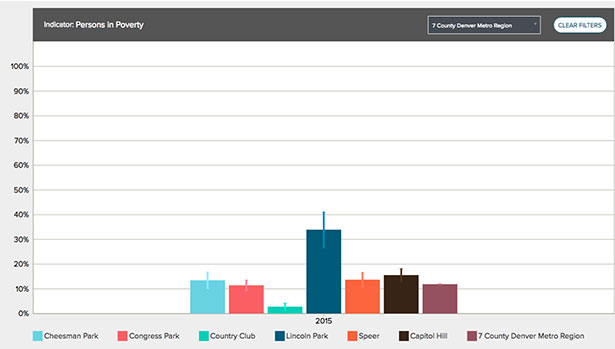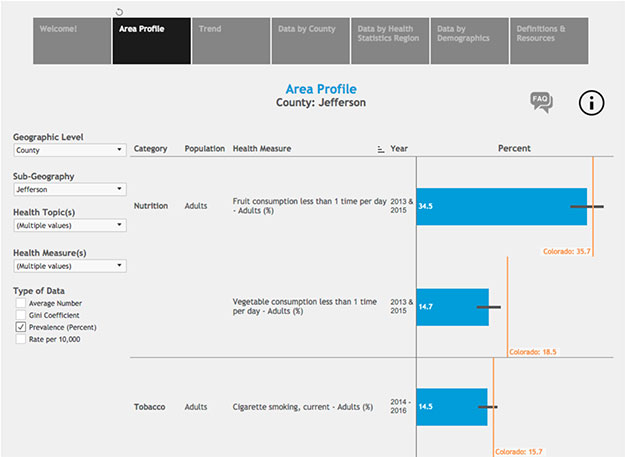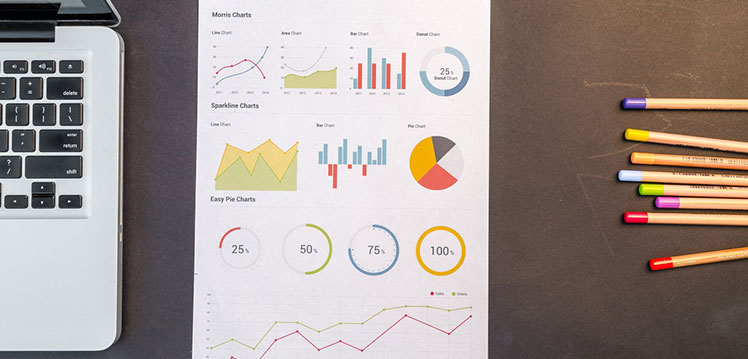By Aaron Schonhoff, Research and Evaluation Associate at Joining Vision and Action
Secondary data sources are vital tools to have at your disposal.
Though it may not provide insight into your specific research, secondary data can provide context to your geographic area and the issues it faces, or it can help identify regions suitable for comparison to your own.
There are so many data sources online, many of them specific to particular topics or geographic areas. While I certainly cannot list every available resource, here are some good data sets containing general enough data to get you started.
General Data Sets
U.S. Census Data
Do you need to collect demographic information? While it is not always the easiest to navigate and find what you are looking for, census data is a rich mine of useful data that can provide context to your work.
With a wide variety of data points from population figures to occupational data, the census is often a great place to start looking for data. One downside, however, is that since the census is only conducted every 10 years, it can quickly become outdated and unable to capture change at intervals of less than 10 years.
In recent years the census has done a good job of developing useful tools for public use. Population change is just the beginning when it comes to data displayed in interactive maps. The Census Business Builder takes a variety of data sources, including the continuously administered and updated American Community Survey, Quarterly Workforce Indicators and consumer spending data, to help businesses looking to expand or potential new businesses to collect analytics to better understand their potential markets.
Data.gov
Ever needed data on fruit and vegetable prices, college value scorecards or housing affordability? Well, as crazy as it sounds, these data points and many more can be found at the federal government’s data site.
As the U.S. government’s open data project, data.gov serves as a useful starting point for any data digging expeditions. The product of the federal government’s pledge to make data transparent and accessible, data.gov offers an overwhelming number of data sources. Data sources can be examined by theme and drilled down from there.
Open Data Network
Need a quick way to compare statistics across various geographies?
In addition to making it possible to explore data by theme, open data network takes some of the sources of data provided by the census and data.gov and combines them with third-party partner sources. Users can select a geographic starting point and quickly add other geographies for comparison.
The Open Data Network allows for geographical comparisons quickly and easily.

Pew Research Center
Looking for data on opinions and perspectives of the American public on a wide range of social trends and beliefs?
As one of the premier research organizations, Pew has a plethora of interesting studies and data to peruse. While requiring you to sign up (for free), Pew has data sets on everything from social trends, to views on technology and how society uses technology, to U.S. politics.
In addition to providing write-ups highlighting key findings, Pew also provides access the raw data (in the form of SPSS .sav files—reach out if you need some support with analyzing!).
Colorado and Denver Data
Community Facts
Looking to compare various Denver metro neighborhoods?
As the flagship tool of Piton Foundation’s Shift Research Lab, Community Facts focuses on the Denver metro region. Here, census and American Community Survey data is displayed by metro area neighborhood. With the ability to compare neighborhoods and to build custom reports, this is indeed a useful tool for gathering insights into the metro region.
With Community Facts, various neighborhoods in Denver can be quickly compared.

City of Denver Open Data
Looking to overlay your own data over zoning maps of Denver?
Although it does not contain many easy ways to sort or filter data by type or theme, Denver’s open data catalog contains numerous useful bits of data. Most of the sources in Denver’s open data catalog come in the form of files used in geographic information system (GIS) software.
Whether it is various zoning map data, traffic count or traffic accident data, library data, census data or American Community Survey data mapped onto census tracts or blocks or election precincts, this catalogue contains numerous useful local data sources.
If you are instead interested in budgetary or financial reporting data, the Transparent Denver page is likely what you are looking for. If you are researching a city or county other than Denver, do a web search for the desired city or county and include terms such as data or transparency.
Colorado State Agencies
Looking for Colorado statewide data? Depending on your topic, you may need to look at the various state agencies to find the data you need. Along the left is a filter that allows users to search by agency topic to help narrow down the list.
The Department of Education has its data and accountability page, where data regarding school performance and growth can be found.
The Department of Public Health & Environment hosts a useful data portal containing the interactive health indicator dashboard and the VISION: Visual Information System for Identifying Opportunities and Needs, along with other data sources and visualizations.
The VISION tool is useful for displaying a wide range of health-related data points across varying geographies in Colorado.

Hopefully, these resources can help you find what you need, but again, this is far from a comprehensive list. If you have a reliable go-to data source, leave a comment. If you are looking for help in your research, reach out and contact us.







Leave A Comment